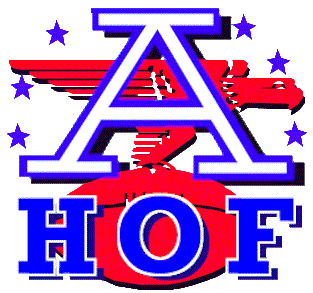|
 |
|
Copyright Sports
Illustrated |
|
 |
July 13, 2009
The AFL
GAME CHANGERS ~ Fifty
years ago a group of would-be owners who couldn't
get into the NFL launched a rival league that would
transform the way pro football is played—and
contribute mightily to its rise as the nation's most
popular sport
|
In the living room of Ralph Wilson's house
in Grosse Pointe Park, Mich., hangs Claude Monet's
19th-century French riverscape La Seine à
Argenteuil. Wilson, the Buffalo Bills' owner,
paid $8.25 million for the painting in 1997, and he
enjoys talking about its beauty and its history. ¶
But what Wilson really cherishes is football
history—specifically, American Football League
history. Fifty years ago, Wilson, then a minority
owner of the Detroit Lions and an insurance magnate,
joined a small cadre of risk-taking businessmen who
wanted to break the NFL's grip on the pro game and
offer America something different. ¶ Wilson had read
about Lamar Hunt's plan to form a rival league. He
called Hunt, a Texas oilman whose bid for an NFL
expansion franchise had been turned down, to find
out how he could get a piece of the action. Come up
with $25,000 to buy a franchise, Hunt told him, and
a team was his. Wilson couldn't be sure he wasn't
throwing money down the drain and had no idea where
to put his team. "I thought of Miami," he says with
a laugh, "but I tried to lease the Orange Bowl, and
they said they wanted to wait for an NFL team. Hunt
suggested Buffalo. I met with the managing editor of
the Buffalo Evening News, Paul Neville. In
those days you had to have the support from the
newspapers or you were dead. I told him I'd give the
city a franchise for three years if he promised he'd
write about us every day. He said yes, and that was
it."Why did he put a team in a city he knew
nothing about, with no guarantees of its support?
"It was a passion," says Wilson, 90, whose Bills
became the AFL's seventh franchise in October 1959.
"It was like that for all the owners. We had no idea
what the future was. But there never would have been
an AFL if the NFL had given Lamar Hunt the franchise
he wanted in Dallas."
The AFL was eight franchises strong for its
inaugural season in the fall of 1960, and over the
next 10 years the rebel league captivated football
fans and changed the landscape of sports in America.
The AFL merged with the NFL in 1970, but its
influence is still felt in profound ways. |
GOOSE GONSOULIN
Denver Broncos 1960--66, San
Francisco 49ers 1967
THE MAN known as "the original
Bronco" made far more money outside
football than he did from an eight-year
career, but Austin (Goose) Gonsoulin
prizes his time with Denver's first
major pro team above most everything
else. As a 6'3" DB out of Baylor, he had
43 interceptions (including 11 as a
rookie in 1960) and earned a reputation
for sledgehammer hits. Upon retiring due
to injuries, Gonsoulin returned to his
native Texas and worked in a variety of
fields: oil, construction, real estate,
banking and sales. At 71, he's
optimistically battling a second round
of prostate cancer and meets up with
fellow AFL vets such as Hall of Fame
Jets wideout Don Maynard at cancer
awareness events. Their talk inevitably
turns to two topics: "How the money was
terrible," Gonsoulin says, laughing,
"and how hard I'd hit Don across the
middle."
Three-time All-AFL > Broncos
Ring of Fame |
 |
|
The AFL revved up the offense
In 1961 three of pro football's
22 teams averaged more than 28 points a game, and
all three—the Houston Oilers, Boston Patriots and
San Diego Chargers—were in the AFL. In the first
eight games of the 1966 season, the AFL's Kansas
City Chiefs averaged 35.6 points. What is now known
as the West Coast offense was conceived by Chargers
coach Sid Gillman, and the AFL even had the
two-point conversion. Dominant teams in the NFL
(Green Bay, Cleveland, Chicago and the New York
Giants) moved the ball on the ground. San Diego,
Oakland, Kansas City and the New York Jets offered
up air shows. It's an oversimplification, but that's
how fans came to see the two leagues.
"The NFL does today what we were doing in 1962,"
says Hall of Fame wide receiver Lance Alworth
(box, page 60), who played nine seasons with the
Chargers. "We created an offense that could change
every play at the line of scrimmage. That made the
game exciting." And it translated to television. |
|
Click here to continue story |
|
|







